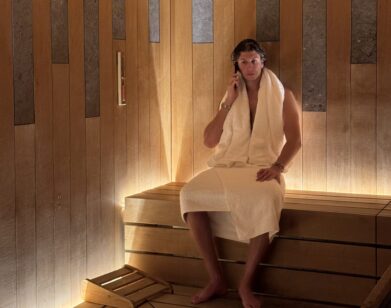In Profile: Welcome to Eairth

Two years before the rest of the world had their “Pandoran moment”-that poignant sensation of universality Avatar induced in most of us-designer Melissa Dizon got her eco-spiritual wake-up call in 2007 in the middle of a Philippine rainforest. Exhausted from surfing, she retreated to the shade of a nearby jungle for a hike, where she crossed paths with a Neytiri-like figure. It was a powerful and stirring visual. “A young, indigenous girl about 15 or 16 suddenly crossed my path.” Dizon recalls. “She was wearing this amazing ACDC t-shirt, completely faded, and a woven skirt with a machete slung into her belt.” The marriage of ancient customary dress and appropriated rock memorabilia spoke to Dizon: “I realized this was my future… how I want to look and how I want to live now.” Dizon, formerly a New York-based designer for labels ranging from Todd Oldham to Levi’s to Theory. “I came to Manila on vacation wearing head-to-toe Balenciaga.” she adds with a laugh. These days Dizon, who now lives full-time in Manila, wears Eairth (emphasis on “AIR”), her own “101% sustainable” label.
Eairth’s designs synchronize indigenous and street style with seamless T-shirt dresses cut from a circular pattern for ease of movement and featuring hand-drawn geometrical patterns created by the local Filipino tribes with whom Dizon often collaborates. Loosely knit scarves resemble snaking foilage. Cape jackets feature towering hoods that could be worn to weather surf or storm (or New York snow). Based on the loose silhouettes beloved by Filipino women, most of Eairth’s garments resemble attractive crumples of fabric until they are worn and transformed into cocoon dresses comfortable enough to sleep in.
Eairth’s seasons rely on the vagaries of literal, localized seasons. The color palette varies from seashell pinks to murky jades to stonewashed blues, depends on what pigments tribes can harvest from the regional flora during any given time. Indigo, talisay leaves, and coconut husks are among the unconventional sources of Dizon’s garment dyes, which she likes for the “irregularities” they preserve in her hand-woven fabrics. “It makes it quite special. I produce only 50 to 100 of each look,” she says. “Even then, no two are the same.”
EAIRTH IS AVAILABLE AT EVA NEW YORK, BARNEYS, AND KAIGHT.






